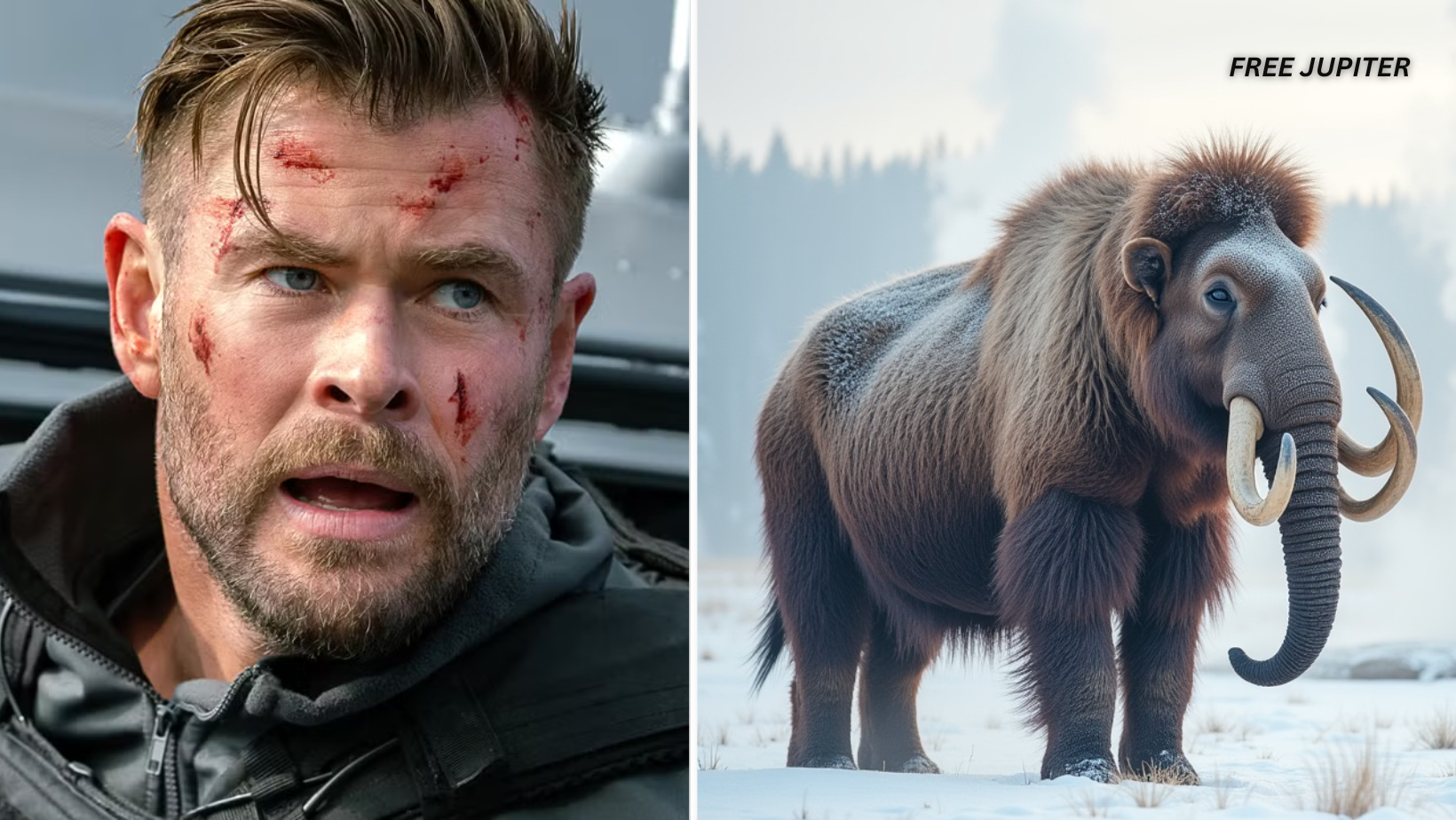Friendly Note: FreeJupiter.com shares general info for curious minds 🌟 Please fact-check all claims—and always check health matters with a professional 💙
Colossal Biosciences is pioneering a transformative approach to de – extinction, aiming not just to replicate extinct species but to reimagine them as resilient, adaptable organisms fit for today’s rapidly changing environments. Their work transcends traditional cloning or genome copying, instead focusing on identifying and resurrecting the core genetic traits that defined these species, while enhancing them with genetic adaptations to better withstand current and future ecological challenges.
Beyond Simple Resurrection: Engineering Resilience
At the core of Colossal’s mission is the belief that de-extinction should be more than a scientific novelty – it should be a tool for ecological restoration and conservation. By isolating the fundamental genes that made extinct species unique, scientists can reintroduce these traits into the DNA of their closest living relatives using advanced gene-editing technologies, primarily CRISPR. This method allows for the creation of hybrid organisms that embody the essence of the extinct species but with improved traits such as enhanced disease resistance, climate adaptability, and drought tolerance.
This approach is particularly vital given the unprecedented rate of species loss driven by human activity over the past few centuries. Unlike slow natural evolutionary processes or rare catastrophic events like asteroid impacts, human-induced environmental changes have accelerated extinction rates dramatically, threatening biodiversity on a global scale. Colossal’s work seeks to counteract this trend by not only bringing back lost species but also by applying these technologies to protect endangered animals currently facing similar threats.
The Woolly Mammoth as a Flagship Project
The woolly mammoth serves as the flagship species for Colossal’s de – extinction efforts. Its close genetic relationship with the Asian elephant-sharing approximately 99.5% of its DNA-makes it an ideal candidate for this genetic resurrection. By comparing the mammoth genome with that of the Asian elephant, researchers identify key genetic variants responsible for traits like thick fur, fat storage, and cold metabolism, which are crucial for survival in Arctic conditions.
One of Colossal’s notable breakthroughs is the creation of the “woolly mouse,” a genetically engineered mouse that expresses multiple mammoth-like traits such as thicker, longer fur and altered metabolic pathways for cold adaptation. This model organism demonstrates the feasibility of editing multiple genes simultaneously to recreate complex traits, a critical step toward eventually engineering a mammoth-like elephant. The success of this project underscores the potential of multiplex genome editing to combine numerous genetic changes in a single organism, a process that nature took millions of years to perfect.
Multiplex Genome Editing and Somatic Cell Nuclear Transfer
Colossal employs sophisticated techniques such as multiplex genome editing, which allows simultaneous modifications at multiple genetic sites, dramatically accelerating the pace of genetic engineering. After editing the genome of a living relative – like the Asian elephant or gray wolf – scientists screen for the best-edited cell lines. These selected cells are then used in somatic cell nuclear transfer, where the nucleus of the edited cell is inserted into an egg cell from a surrogate species. The resulting embryo is implanted into a surrogate mother, which carries the pregnancy to term.
This method was recently demonstrated in Colossal’s dire wolf project, where ancient DNA was used to identify key genetic differences between the extinct dire wolf and its closest living relatives, the gray wolf and other canids. After making precise genetic edits, the team successfully cloned three dire wolf pups, marking a historic milestone as the first de-extinct animals born using this approach.
Conservation and Ecological Restoration
Colossal’s vision extends beyond de-extinction as a scientific curiosity. The company is committed to using these technologies to bolster conservation efforts for endangered species. By creating a genetic “library” of extinct and endangered animals, Colossal aims to provide a genetic reservoir that can buffer species against extinction, support biodiversity, and help restore ecosystems that have been degraded by human activity.
For example, the company is developing solutions to combat diseases threatening elephants today, such as elephant endotheliotropic herpesvirus (EEHV), which is often fatal to young Asian elephants. Insights gained from mammoth genetics are informing strategies to enhance disease resistance in living elephant populations.
Moreover, by understanding the environmental pressures that led to the extinction of species like the mammoth, Colossal engineers animals with enhanced adaptability to warmer climates and altered habitats, increasing their chances of survival upon reintroduction. This approach represents a paradigm shift: instead of simply recreating the past, it builds species that can thrive in the future.
Read more: Scientists Create Breakthrough DNA Nanobots That Precisely Target and Destroy Cancer Cells
The Role of Celebrity Backers
The involvement of well-known personalities has played a pivotal role in advancing the ambitious project to revive extinct species, merging the worlds of science, philanthropy, and popular culture in an unprecedented way. Among the most prominent supporters is Australian actor Chris Hemsworth, whose commitment extends far beyond mere endorsement; he has invested millions into Colossal Biosciences, the pioneering biotech firm driving this de-extinction effort. Hemsworth’s participation brings a unique blend of public visibility and financial backing, helping to elevate the project from a niche scientific venture to a globally recognized initiative.
Hemsworth’s engagement is deeply rooted in his longstanding passion for environmental causes and wildlife preservation. Known for his advocacy on climate change and conservation, he leverages his celebrity platform to raise awareness about ecological issues, making his support for resurrecting species like the woolly mammoth a natural extension of his values. This alignment of personal interest with investment underscores a growing trend where celebrities actively contribute to scientific and environmental innovation, rather than simply lending their names to causes.
Alongside Hemsworth, other high-profile figures such as Paris Hilton and motivational speaker Tony Robbins have also committed substantial resources to the project. Their involvement not only infuses additional capital but also attracts diverse audiences, broadening public engagement with the science behind de-extinction. This fusion of star power and cutting-edge research creates a compelling narrative that captures imaginations and stimulates dialogue around biodiversity loss and technological solutions.
Read more: This Simple Tennis Ball Test Reveals Your True Biological Age—And Predict If You’ll Live To 100
The financial contributions from these celebrity backers have been instrumental in enabling Colossal Biosciences to secure over $235 million in funding, which supports a multidisciplinary team of scientists, geneticists, and conservationists. This funding has allowed the company to expand its research facilities across multiple locations, including Dallas, Cambridge, Boston, and Melbourne, and to develop sophisticated gene-editing platforms utilizing CRISPR technology. The capital influx also supports the launch of spinout companies focused on related scientific challenges, such as managing large biological datasets and addressing environmental issues like plastic degradation.
Moreover, the high-profile nature of these investors helps to legitimize the project in the eyes of other potential funders and the broader public. When celebrities known for their influence and credibility back scientific ventures, it can reduce skepticism and encourage further investment from venture capital firms and institutional sources. For example, Colossal Biosciences’ valuation has soared to over $10 billion, reflecting confidence not only in its scientific potential but also in its ability to attract and sustain broad-based support.
Beyond fundraising and publicity, celebrity involvement also serves an educational purpose. By sharing insights into the project through social media and interviews, figures like Hemsworth and Hilton help demystify complex genetic technologies and conservation strategies for the general public. This outreach fosters a more informed conversation about the ethical, ecological, and practical implications of bringing extinct species back to life.
However, the blend of celebrity and science is not without its challenges. Critics sometimes question whether the presence of famous investors risks overshadowing the scientific rigor or ethical considerations involved. Yet, Colossal Biosciences’ leadership, including CEO Ben Lamm and Harvard geneticist Dr. George Church, maintains a clear focus on rigorous research and responsible innovation. The company’s commitment to transparency and collaboration with conservation groups helps balance the spotlight with substantive progress.










